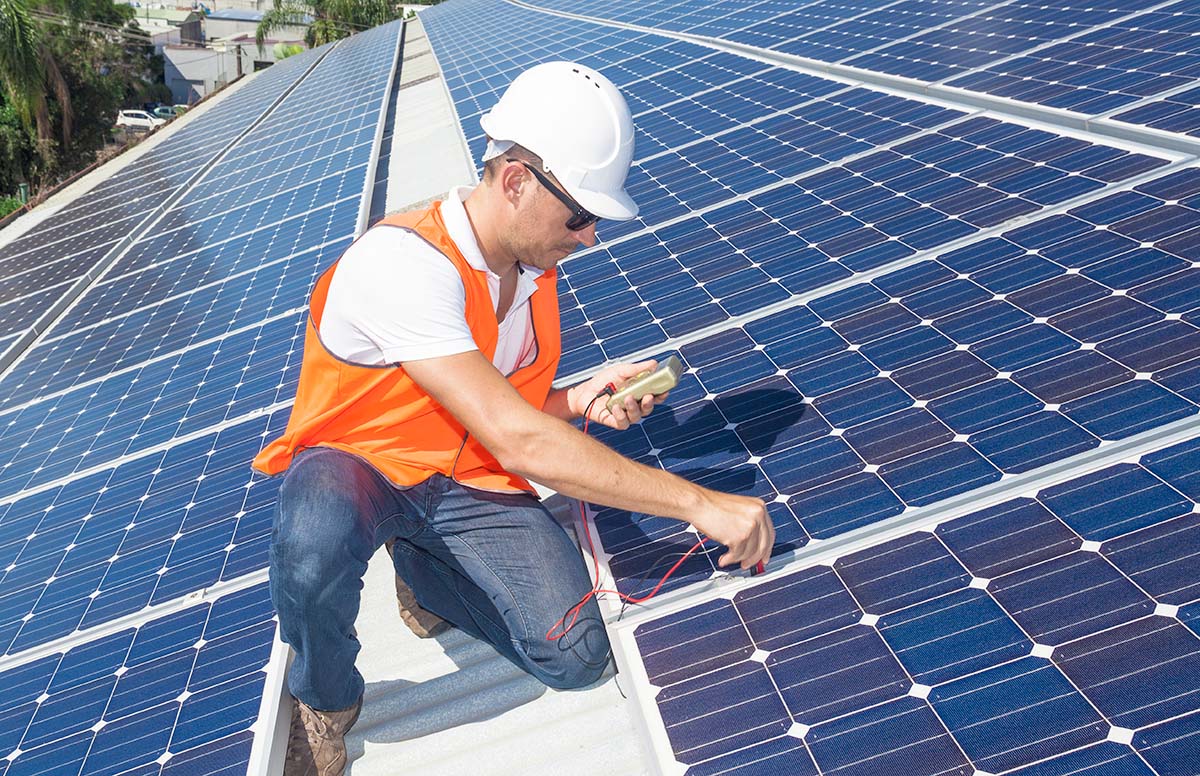

As we grapple with the urgent need to reduce our carbon footprint and combat climate change, turning to the sun for power is a solution that is not only practical but also increasingly accessible. This comprehensive guide aims to shed light on the essentials of solar panels, from basic principles to installation and maintenance, providing you with all the knowledge you need to harness the sun’s power effectively.
Solar panels, at their essence, function by converting sunlight into electrical energy. When these panels are interconnected and strategically placed, they form a solar power system capable of providing electricity to residential homes, commercial buildings, and even more extensive infrastructure. The process utilises sunlight, an abundant and renewable energy source, allowing for a reduction in reliance on non-renewable energy sources and a decrease in greenhouse gas emissions. This contributes to a more sustainable environment and propels us towards a future where clean energy is the norm.
Solar technology has three categories of panels to consider: monocrystalline, polycrystalline, and thin-film. Monocrystalline panels, recognised by their uniform dark appearance, are crafted from a single silicon crystal, resulting in superior efficiency and durability, albeit at a higher cost. Polycrystalline variants, identifiable by their slightly blue hue and fragmented texture, are less efficient but more cost-effective, offering a balanced solution for many homeowners. Thin-film panels stand out for their versatility and lightweight design, suitable for a variety of surfaces where traditional panels might not be viable. Although they exhibit the lowest efficiency among the three, their adaptability and ease of installation make them an appealing option for specific applications. The choice among these types hinges on balancing efficiency needs with budgetary constraints and installation conditions, ensuring the selected panel type optimally aligns with the user’s energy goals and site characteristics.
Before embarking on a solar installation project, it’s imperative to comprehensively evaluate your property’s suitability for solar energy generation alongside an analysis of your household’s energy consumption. Factors such as the orientation and pitch of your roof play a significant role in maximising solar gain, while shading from surrounding buildings or foliage may impact the efficiency of your system. Utilising online tools can offer an initial estimate of your property’s solar capacity. Concurrently, a detailed review of your energy bills will reveal your consumption patterns, enabling you to ascertain the size and capacity of the solar system required to meet your demands. This crucial step ensures that your transition to solar energy is efficient and aligned with your specific energy requirements, laying the groundwork for a successful solar installation.
Maintaining your solar panel system is straightforward yet essential for ensuring its longevity and efficiency. Periodic cleaning is advised to remove any accumulation of dirt, leaves, or snow, which could hinder performance. This can be achieved using a hose and a soft brush, taking care not to scratch the panels. Additionally, leveraging the system’s monitoring capabilities allows for real-time tracking of energy production. This feature is invaluable for promptly detecting any deviations in performance and facilitating early intervention.
Furthermore, scheduling annual inspections by a professional is recommended. These inspections aim to identify and rectify any underlying issues, such as faults in the wiring or inverter. By adhering to these maintenance and monitoring protocols, you can optimise your system’s output and ensure it remains a reliable source of green energy.
Embrace this sustainable energy source and join the movement towards a cleaner, greener future. Solar energy not only paves the way for a significant reduction in carbon emissions but also empowers individuals and communities with a resilient and renewable energy solution.
Contact us today to learn more about our solar panel installation, maintenance and repair services!